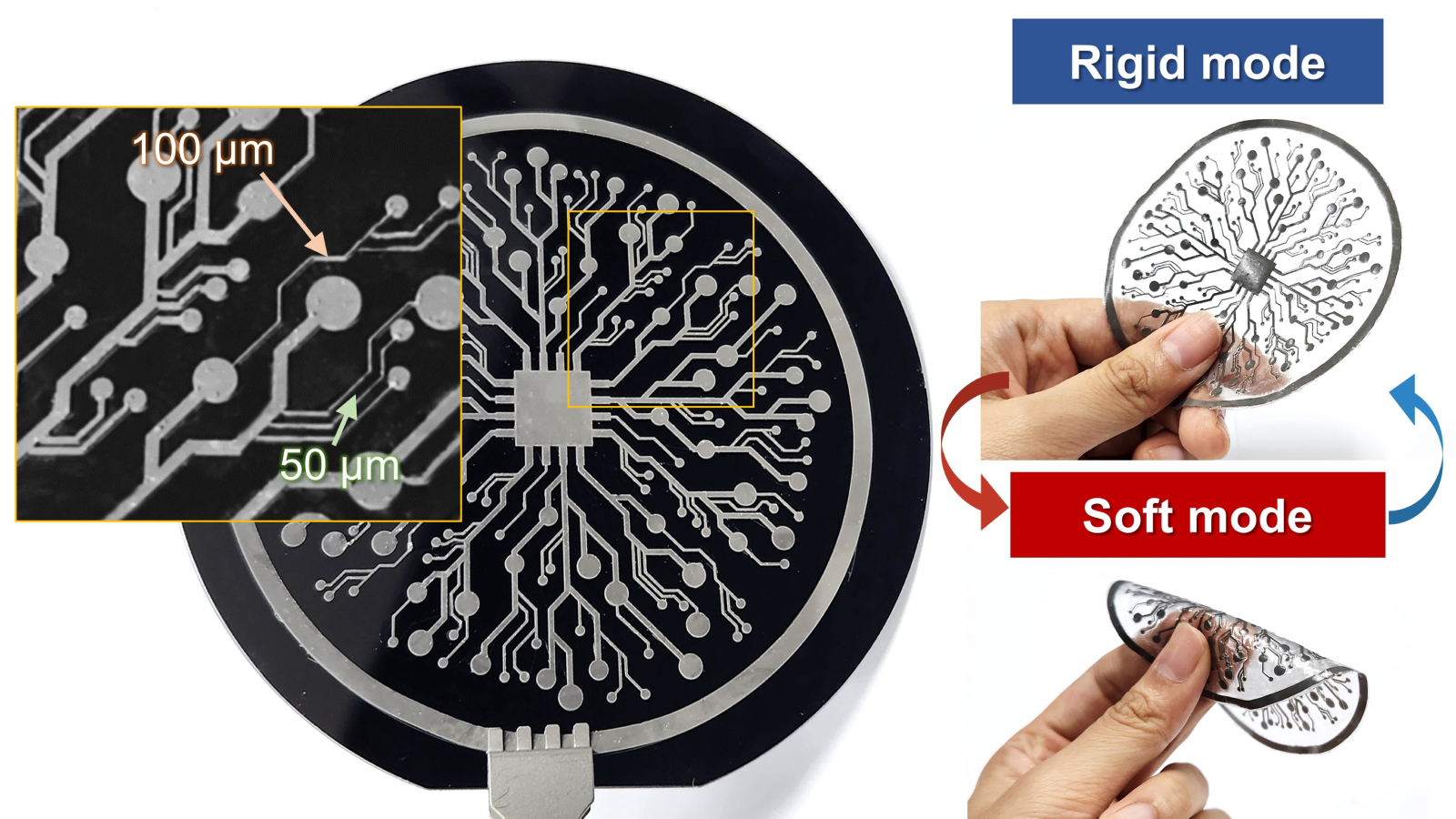
“Electronic Ink” Creates Circuits That Can Switch Between Rigid and Soft
Scientists have developed a novel “electronic ink” capable of printing circuits that transition between rigid and flexible states when heated, potentially revolutionizing medical devices and robotics.
The Challenge of Combining Rigidity and Flexibility in Electronics
Most current electronics fall into two categories: rigid devices like smartphones offering durability and performance, and soft systems like wearables prioritizing comfort but sacrificing precision. Researchers are striving to bridge this gap with “variable-stiffness electronics” that can adapt to different needs.
This pursuit aims to create devices that offer the best of both worlds – strength when needed and flexibility for comfort or adaptability.
Gallium-Based Ink: A Breakthrough in Material Science
The new electronic ink combines gallium, a metal that melts just below body temperature, with a polymer-based solvent. This unique composition allows the ink to become conductive and change stiffness when heated, overcoming previous challenges with gallium’s high surface tension and oxidation issues.
The key innovation lies in dispersing microscopic gallium particles into a polymer matrix using dimethyl sulfoxide (DMSO), creating a stable and printable substance.
How the Technology Works: From Solid to Flexible
When the printed circuit is heated, the solvent breaks down, creating an acidic environment that removes the oxide layer from the gallium particles. This allows the particles to melt and merge, forming conductive pathways. The resulting material can alternate between plastic-like hardness and rubbery softness, becoming over 1,400 times softer when warmed.
The ability to precisely control the ink’s acidity is crucial for electrically and mechanically connecting the gallium particles, enabling high-resolution circuit fabrication.
Potential Applications: Medicine, Robotics, and Beyond
The researchers demonstrated the technology’s potential by building a wearable health device that stiffens at room temperature and softens against the skin, and a flexible brain implant that remains rigid during surgery before softening to minimize irritation.
This breakthrough has significant implications for various fields, including medical implants, soft robotics, and potentially even large-scale or 3D-printed electronics.
Key Takeaways
- Scientists have developed an “electronic ink” that allows circuits to switch between rigid and soft states with heat.
- The ink combines gallium with a polymer-based solvent, addressing previous challenges with gallium’s properties.
- The technology enables the creation of variable-stiffness electronics, bridging the gap between rigid and flexible devices.
- Potential applications include medical implants, soft robotics, and advanced wearable technology.
- The ink is compatible with common manufacturing techniques, paving the way for scalable production.




.png?width=1200&height=630&fit=crop&enable=upscale&auto=webp)

